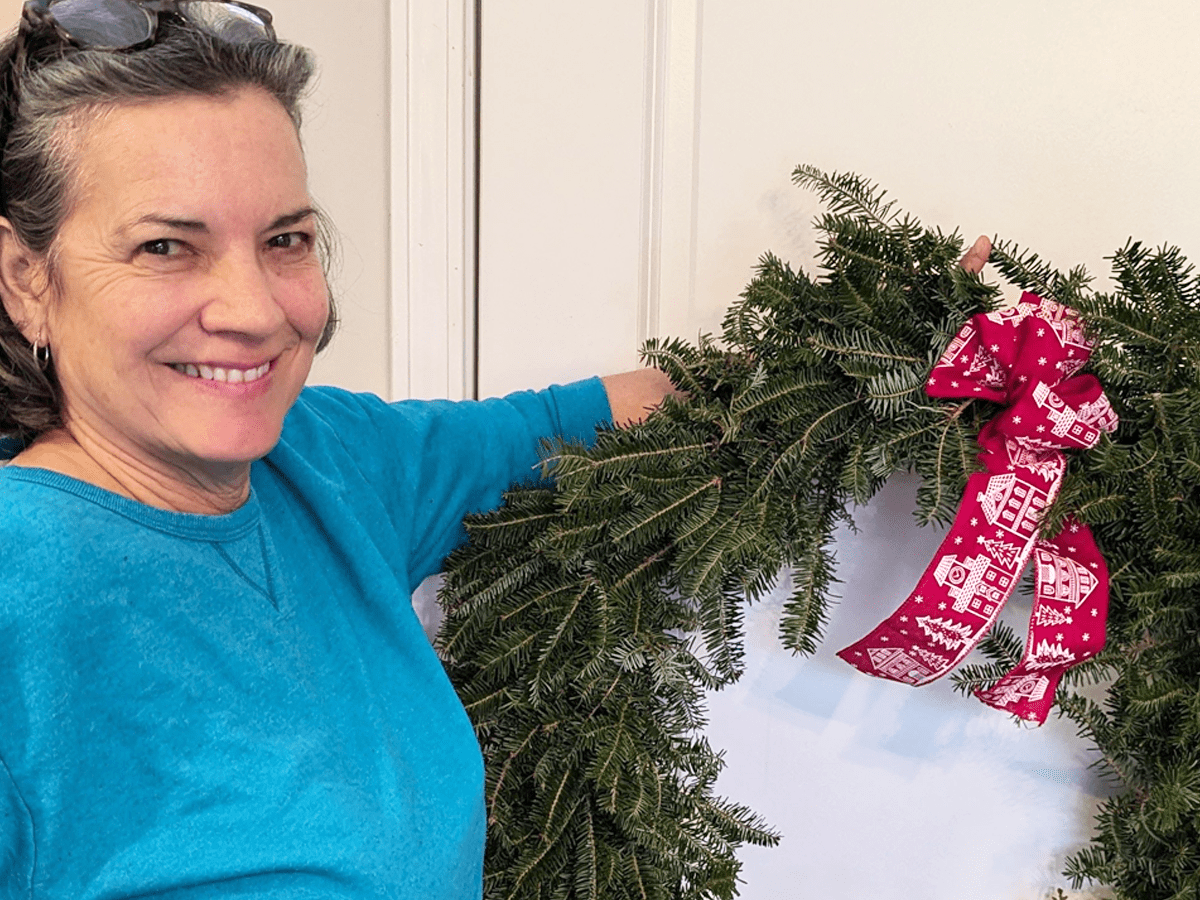The ancients equated the winter solstice (to when night and day were equal in length), as a celebration of the sun’s return. The fading sun was equated with dying: plants browned, the light faded, and days grew colder. However, some plants remained green. These evergreens were symbols of the hope of life’s return to the world. The evergreen arborvitae’s name literally means “tree” and “living.” The use of evergreen trees, garlands, and wreaths were an ancient symbol of life. The wreath symbolizes the circle of life, without beginning or end.
It was the German people that were credited for creating the tradition of the Tannenbaum. The earliest legend dating to 732 AD involved St. Boniface evangelizing Germany. The legend has it that the oak tree pagans danced around in honor of Thor was cut down by St. Boniface. However, a young fir tree grew beside the oak stump, and then became the symbol for Christmas.
German settlers brought the Christmas tree to Pennsylvania in the 1830s. The custom was viewed with suspicion by Americans of the time, as it hinted of pagan culture (which of course is where it had originated). The precedent continued into the 19th century until German and Irish immigrants undermined these puritanical views.
By the 1890s, ornaments were coming into America and decorating began to take on a measure of popularity. In the earth 20th century, Americans were decorating with homemade ornaments, while German-Americans were decorating with apples, nuts and marzipan cookies. The star placed at the top of the tree represents the Star of Bethlehem.
Today, the Christmas tree of one sort or other is found throughout the globe. Evergreens commonly used as Christmas trees include spruce, fir, Douglas fir and pine. It generally takes anywhere from 7 to 8 years to grow a tree to harvestable size.
However, trees were not the only evergreens used for Christmas decoration. An entire group of trees, shrubs and vines can be used to make wreaths, roping, and centerpieces. These include evergreen trees like white pine, arborvitae, fir, and holly trees. Evergreen shrubs include boxwood, cherry laurel, Oregon grape holly, and others. Vines such as grape and bittersweet can be used for wreath making or decorating with berries. So how do you make a wreath, roping and centerpiece? Well, here are some suggestions

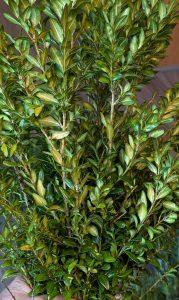

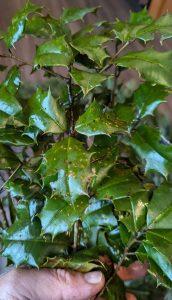
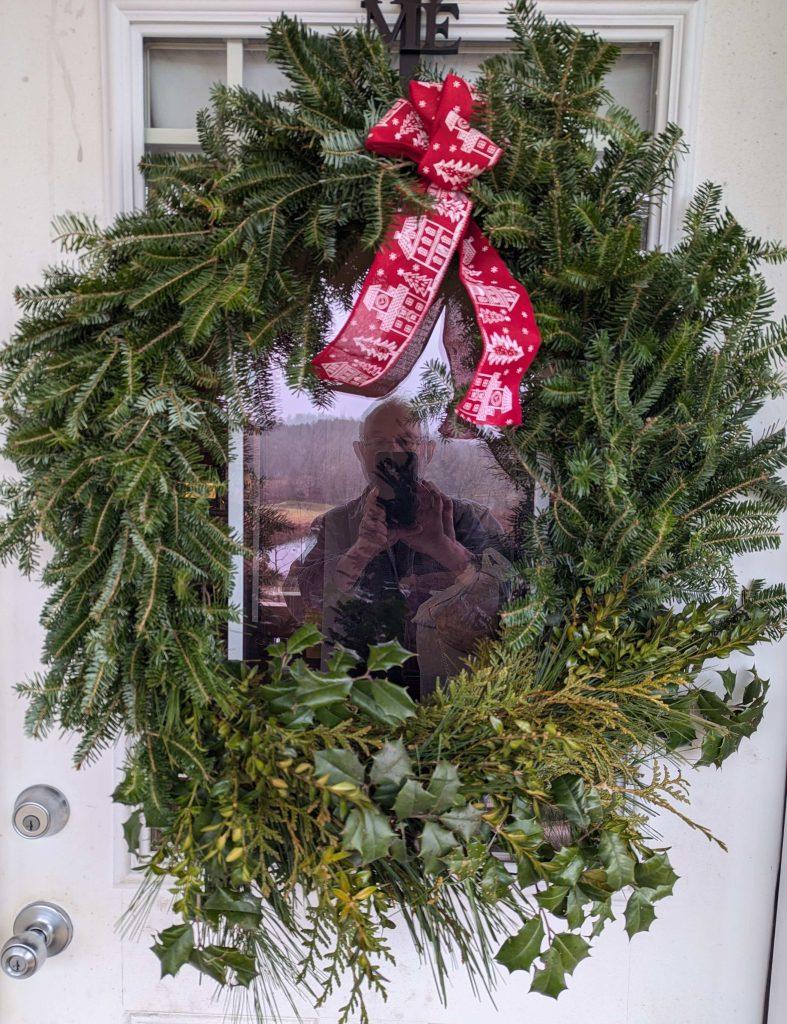
Making a Wreath
Wreath making is fun! Only a few items are needed to get started. These include a wire armature, florist wire, hand pruners and hedge shears, and an assortment of greens. Late fall is a great time to prune evergreens. What you harvest from a bit of judicious pruning (by reaching in and selective cutting with a hand pruner) is fodder for wreath, roping, and centerpieces.
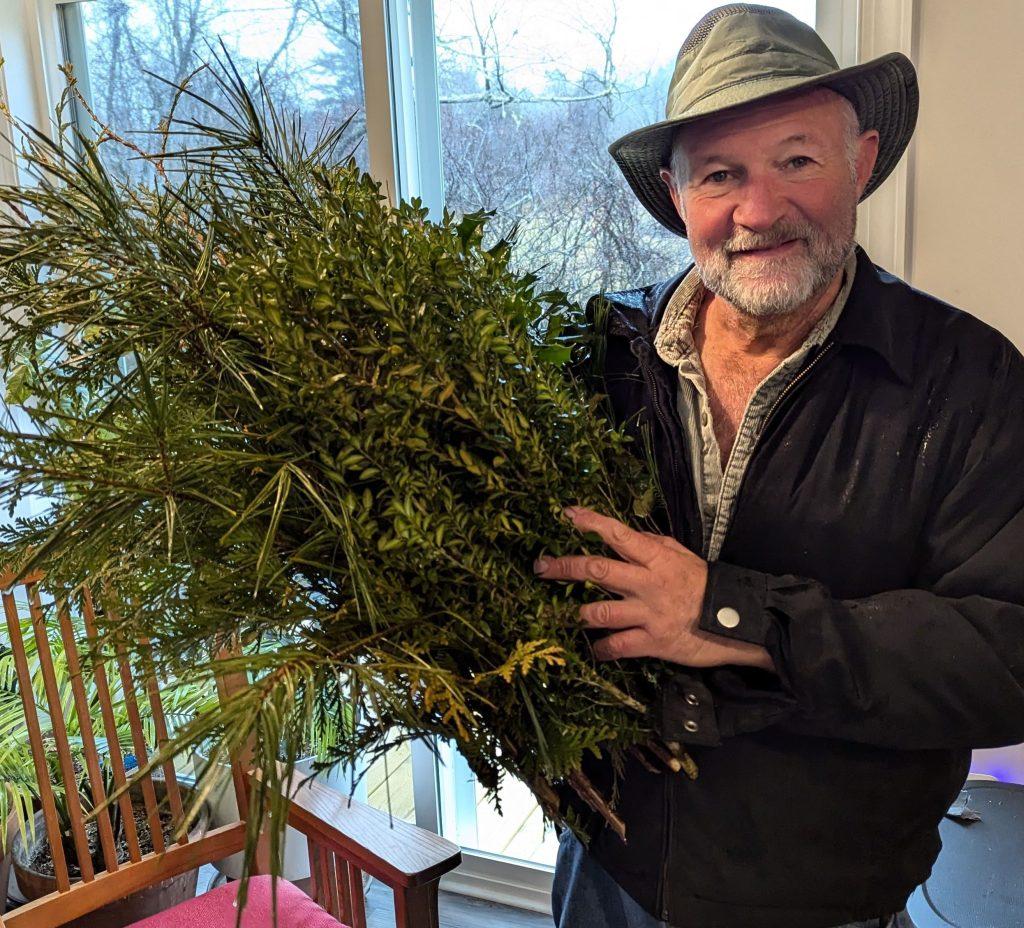
Start by cutting the evergreens you harvested into 8” lengths. These cuttings ought not to be any more than about ½” in diameter for ease of securing with wire. Fix two to three cuttings to the armature by winding the wire around the base of the cuttings and armature. You may opt to make the wreath from a single species, say balsam or Frasier fir, or mix in cuttings of holly, arborvitae, pine, and boxwood. Alternate species or use them as an accent on a portion of the wreath. Continue twining and overlapping the cuttings by a third until you have made the circle complete. End by tucking the last bunch under the starting bunch for a wreath that has no beginning or end! Trim errant greens with a pair of hedge shears. Twist a wire loop at the top from which to hang the wreath. Decorate with a bow or other ornaments as you like. That’s it!


Making a Christmas Garland
A garland or roping is made in a similar way by winding small bundles of cuttings with wire and overlapping them by a third. The difference is that you wind the cuttings around rope, such as two- or three-ply sisal. Pull on the wire to secure the cut evergreens tightly. You can make roping as short or long as you wish or need. Wind the finished roping around stair railings in your home or drape over window or open doorway.
Making an Evergreen Centerpiece
For a centerpiece, you will need a small log (4 to 6” in diameter) in which to drill into, a drill, and an assortment of drill bits. Assemble an assortment of cut greens, a pair pruners and hedge shears. You will also need long tapers or candles, generally white ones.
First drill into the log to fit in one to three candles (or more if you like!) using a 7/8” drill bit, 1 ½” to 2” deep. Turn the log on its side and drill into it every 4” using a 3/8” drill bit, 1 to 1 ½” deep. Do the same on the opposite side. Insert your cut greens into the drilled holes. Next drill in between the cut greens and candle holes using a 5/16” drill bit to fit in smaller cuttings. Do the same on the opposite side. Drill more holes between the candles. For example, fit in arborvitae in the larger holes, boxwood in the smaller, intermediate holes and white pine in between the candles. Use hedge shears to trim the greens to a compact and uniform length. Decorate with bows or other ornaments you wish to use.
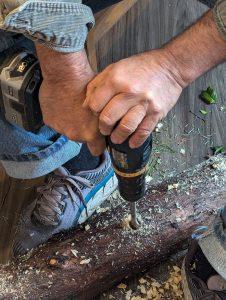

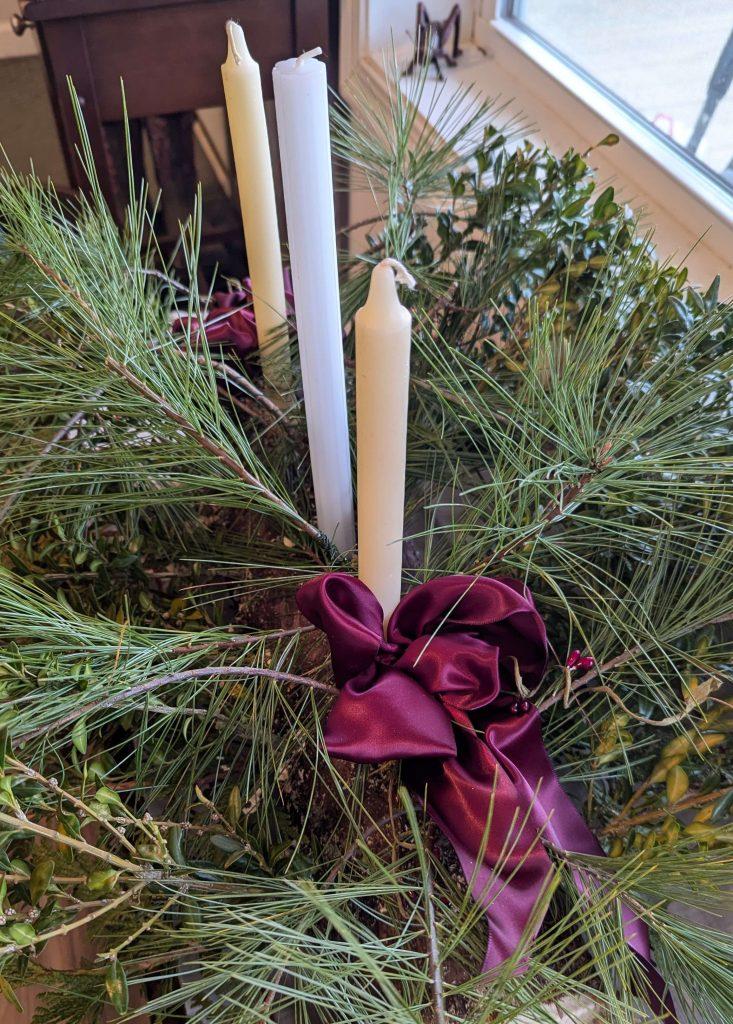
Christmas music, mulled wine, hot chocolate or spiced cider help to make decorating all the more enjoyable! Merry Christmas to one and all!

